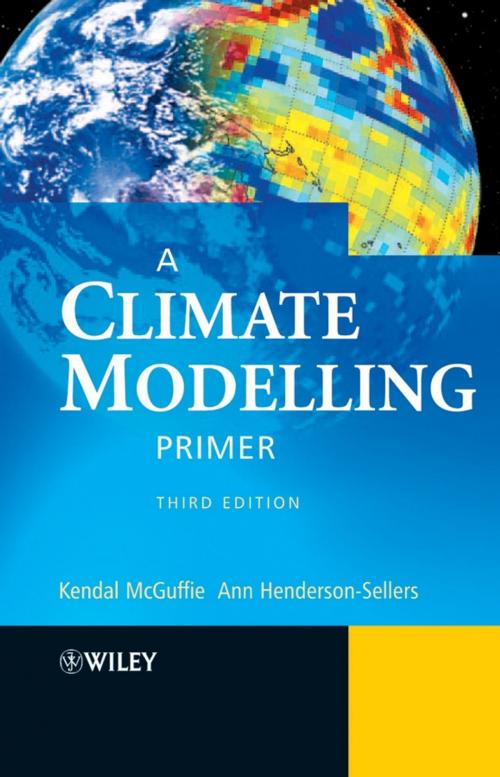| Author: | Kendal McGuffie, Ann Henderson-Sellers | ISBN: | 9781118687857 |
| Publisher: | Wiley | Publication: | April 10, 2013 |
| Imprint: | Wiley | Language: | English |
| Author: | Kendal McGuffie, Ann Henderson-Sellers |
| ISBN: | 9781118687857 |
| Publisher: | Wiley |
| Publication: | April 10, 2013 |
| Imprint: | Wiley |
| Language: | English |
As a consequence of recent increased awareness of the social and political dimensions of climate, many non-specialists discover a need for information about the variety of available climate models. A Climate Modelling Primer, Third Edition explains the basis and mechanisms of all types of current physically-based climate models.
A thoroughly revised and updated edition, this book assists the reader in understanding the complexities and applicabilities of today’s wide range of climate models. Topics covered include the latest techniques for modelling the coupled biosphere-ocean-atmosphere system, information on current practical aspects of climate modelling and ways to evaluate and exploit the results, discussion of Earth System Models of Intermediate Complexity (EMICs), and interactive exercises based on Energy Balance Model (EBM) and the Daisyworld model. Source codes and results from a range of model types allows readers to make their own climate simulations and to view the results of the latest high resolution models.
The accompanying CD contains:
- A suite of resources for those wishing to learn more about climate modelling.
- A range of model visualisations.
- Data from climate models for use in the classroom.
- Windows and Macintosh programs for an Energy Balance Model.
- Selected figures from the book for inclusion in presentations and lectures.
Suitable for 3rd/4th year undergraduates taking courses in climate modelling, economic forecasting, computer science, environmental science, geography and oceanography. Also of relevance to researchers and professionals working in related disciplines with climate models or who need accessible technical background to climate modelling predictions.
As a consequence of recent increased awareness of the social and political dimensions of climate, many non-specialists discover a need for information about the variety of available climate models. A Climate Modelling Primer, Third Edition explains the basis and mechanisms of all types of current physically-based climate models.
A thoroughly revised and updated edition, this book assists the reader in understanding the complexities and applicabilities of today’s wide range of climate models. Topics covered include the latest techniques for modelling the coupled biosphere-ocean-atmosphere system, information on current practical aspects of climate modelling and ways to evaluate and exploit the results, discussion of Earth System Models of Intermediate Complexity (EMICs), and interactive exercises based on Energy Balance Model (EBM) and the Daisyworld model. Source codes and results from a range of model types allows readers to make their own climate simulations and to view the results of the latest high resolution models.
The accompanying CD contains:
- A suite of resources for those wishing to learn more about climate modelling.
- A range of model visualisations.
- Data from climate models for use in the classroom.
- Windows and Macintosh programs for an Energy Balance Model.
- Selected figures from the book for inclusion in presentations and lectures.
Suitable for 3rd/4th year undergraduates taking courses in climate modelling, economic forecasting, computer science, environmental science, geography and oceanography. Also of relevance to researchers and professionals working in related disciplines with climate models or who need accessible technical background to climate modelling predictions.















